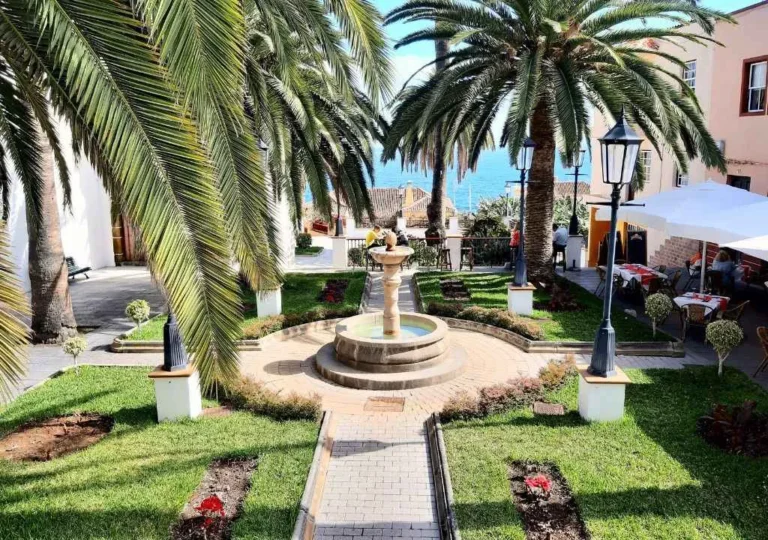” Every corner of La Palma holds a story, a landscape, and a way of life. “
The island is divided into 14 municipalities, each with its own character, rhythm, and accent.
Exploring them means discovering the true essence of the “Isla Bonita”, surrounded by forests, volcanoes, and villages with soul, places where nature and tradition live in harmony.
Most beautiful villages of La Palma
Natural Regions of La Palma
La Palma is naturally divided into three main zones, each with its own charm and identity:
- The North, green and humid, with vineyards, ancient forests, and deep-rooted traditions.
- The Center, the volcanic heart of the island and a natural balcony overlooking the Caldera de Taburiente.
- The South, bright and sunlit, home to salt flats, vineyards, and black-sand beaches that face the Atlantic.
Each region offers a unique experience, but they all share something in common: tranquillity, authenticity, and natural beauty.

The Municipalities of La Palma and Their Essence
- Santa Cruz de La Palma: Living history by the sea
- Breña Alta: Tradition and nature among green ravines
- Breña Baja: Peaceful coast and views of the Atlantic
- Villa de Mazo: Handicrafts, wine, and pre-Hispanic roots
- Fuencaliente de La Palma: Land of volcanoes, salt flats, and Malvasía wine
- El Paso: Volcanic heart and gateway to the Caldera
- Los Llanos de Aridane: Sun, art, and life in the valley
- Tazacorte: Seaside village with tropical flavor
- Puntagorda: Vineyards, almond trees, and infinite skies
- Garafía: Untamed nature and endless stars
- Barlovento: Green cliffs and Atlantic calm
- San Andrés y Sauces: Forests, water, and living traditions
- Puntallana: Ocean viewpoints and rural peace
- Tijarafe: Cliffs, legends, and eternal views
The North: Tradition, Flavors and Nature
The northern municipalities are ideal for travelers who love rural life, gastronomy, and contact with nature.
Here, you can taste traditional dishes like goat stew, prepared slowly and served with “vino de tea” and handmade cheese from local dairies.
The cooler climate and lush landscapes make the north a paradise for hiking lovers, offering green mountains, deep ravines, and trails that connect nature with culture.

Heritage and Culture
Every town on La Palma has its own story, but Santa Cruz de La Palma stands out for its historical charm.
In 1975, it was declared a Historic-Artistic Site for its well-preserved colonial architecture, cobbled streets, and wooden balconies overlooking the sea.
Walking through its old town is like stepping back in time, a journey through centuries of history and culture in one of the most beautiful capitals of the Canary Islands.

Best-Connected Municipalities
Santa Cruz de La Palma and Los Llanos de Aridane are the two most connected cities on the island.
Both offer good infrastructure, accommodation, and transport links, making them excellent starting points for exploring La Palma.
Traditional Architecture: Identity and Heritage
Traditional Canarian architecture is simple and functional, influenced by the early settlers who arrived after the Spanish conquest.
In La Palma, local materials and creativity gave rise to a distinctive and harmonious architectural style.
There are three main types of homes: cave dwellings, single-story houses, and two-story houses.
Buildings are generally classified as manor houses, belonging to wealthier families, or folk architecture, typical of the rural world.
Traditional houses feature whitewashed walls, dark wooden elements, gray or yellow volcanic stone, and red tile roofs.
Wood plays a key role: the Canarian pine heartwood, known as tea, is prized for its durability and natural resin.
Other native woods like barbuzano and viñátigo are used for fine carpentry and traditional furniture.
This blend of natural materials and craftsmanship is not only functional but also a living expression of La Palma’s cultural identity.















